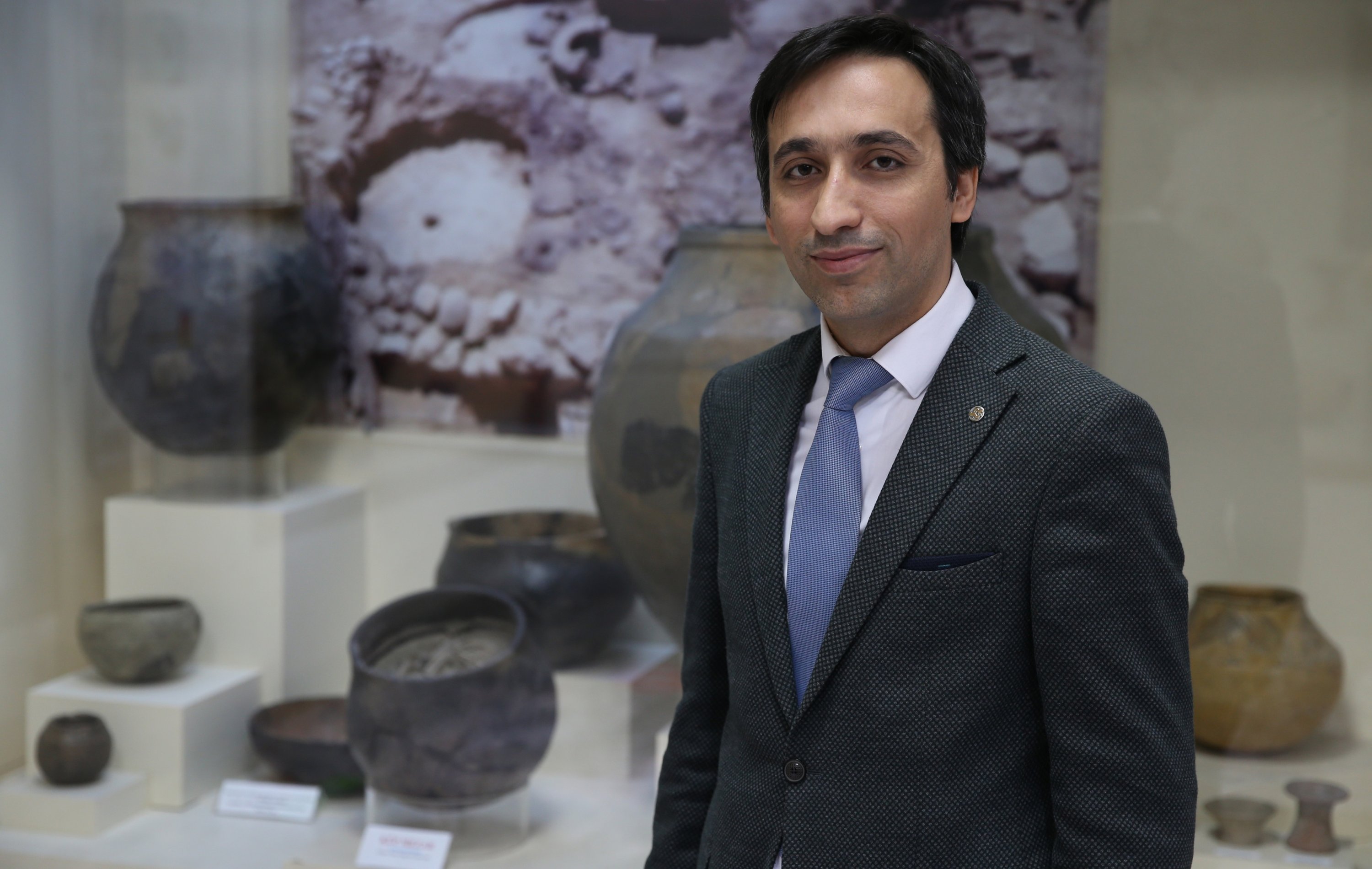© Turkuvaz Haberleşme ve Yayıncılık 2024
A 5,000-year-old cube tomb containing the skeleton of a baby found in 1980 during excavations at the Arslantepe Mound, a site on the UNESCO World Cultural Heritage List, is now on display at Malatya Museum in eastern Turkey.
Many artifacts have been unearthed in the Arslantepe Mound in eastern Turkey's Malatya, which has a history of about 7,000 years, during the excavations carried out by the Sapienza University of Rome since 1961.
The 5,000-year-old pithos burial found in 1980 is now being exhibited at Malatya Museum.
Museum Director Samet Erol told Anadolu Agency (AA) that there are approximately 20,000 artifacts in the museum, which has been in service since 1970.

Explaining that the artifacts uncovered during the Arslantepe Mound and Karakaya Dam rescue excavations are exhibited in the museum, Erol stated that the museum contains important artifacts in terms of Malatya, Turkey and the world history.
Erol stated that Malatya is a city that stands out with its history and mounds, and Arslantepe's inclusion in the UNESCO World Cultural Heritage List last year had a worldwide impact.
Noting that they unveiled the pithos burial for the first time before International Museum Day marked on May 18, "In this direction, we renew the showcases of our museum from time to time to bring the Arslantepe Mound to the fore and present new works to our visitors," he added.
Expressing that there have been many burial traditions throughout the history of humanity: "One of them is cremation while the other is burial without cremation. Here is a burial form of pithos. There is a burial of a baby who has not reached maturity yet. In some pithos burials, the deceased is accompanied by his belongings. No objects were found in the pithos grave, which we are currently exhibiting. What stands out is the fact that the skeleton in the pithos grave did not deteriorate in terms of its form," he said.

"Since then, the pithos has been in our warehouse. We are presenting it to our visitors for the first time. It is a tomb dating back to 4,500-5,000 years ago from the Bronze Age. In Anatolia, the Ubaid culture is an effective form of burial. The culture comes from Mesopotamia. This burial tradition can be seen in many places of Turkey, as we see it in Arslantepe and Değirmentepe," he said.
"Cube tombs were mostly buried just under the living areas of the houses in that period. Because they didn't want to be too far from the dead, which can be regarded as a ritual," he added.
Visitors have stated that they are impressed by the museum.
